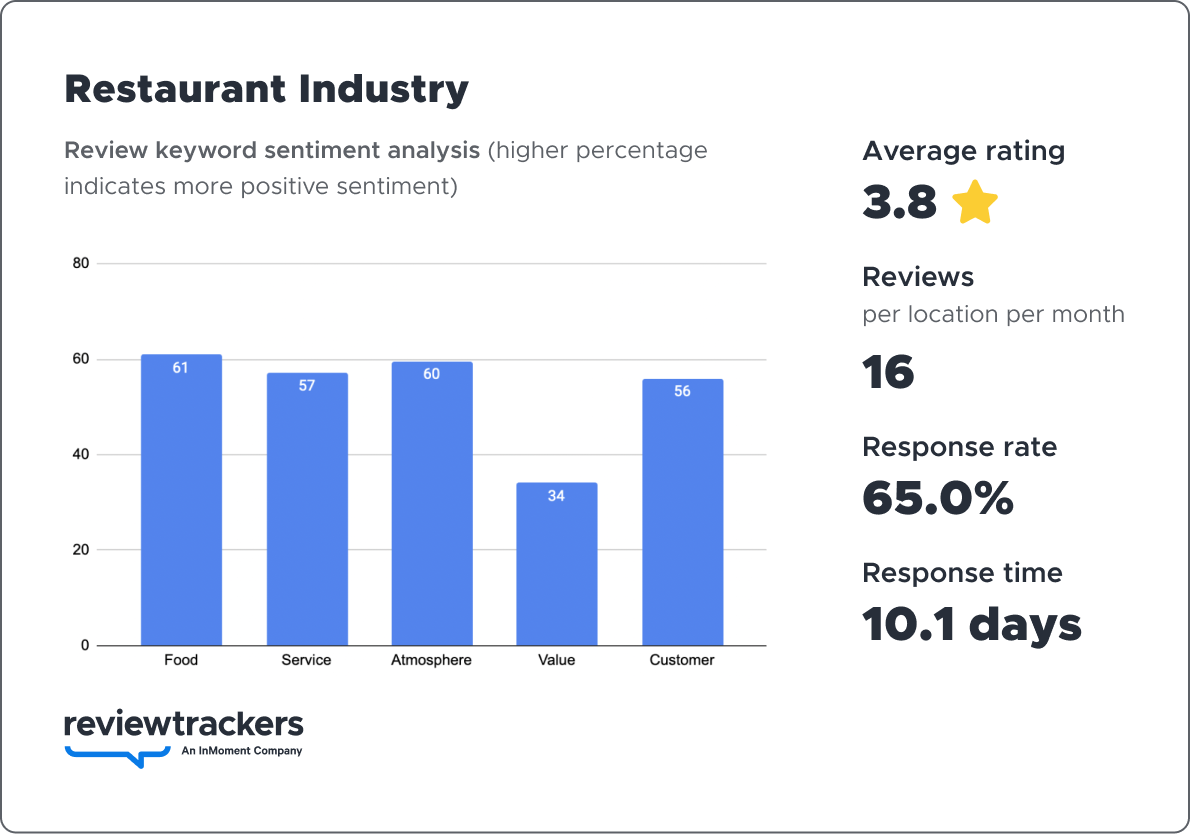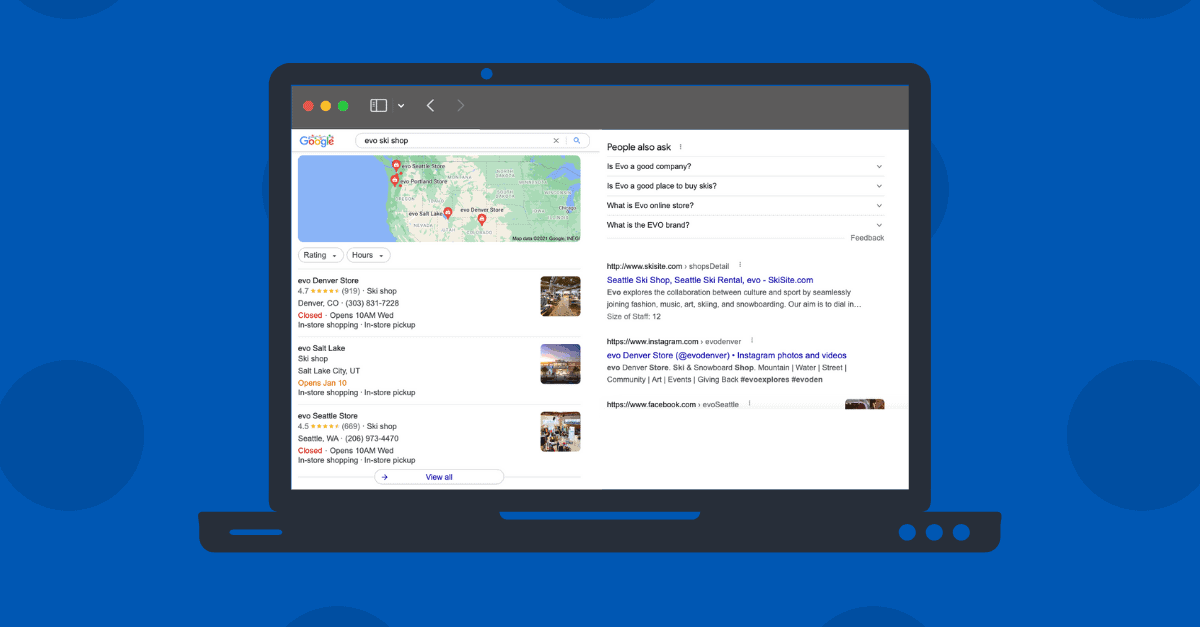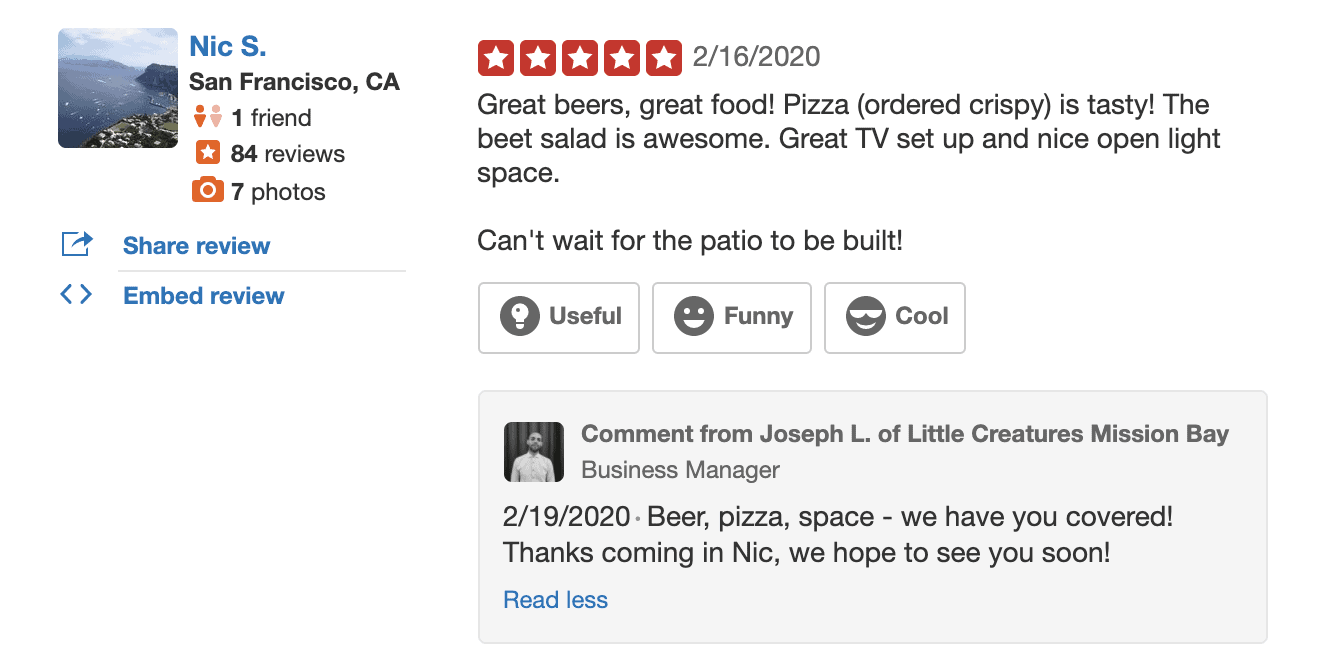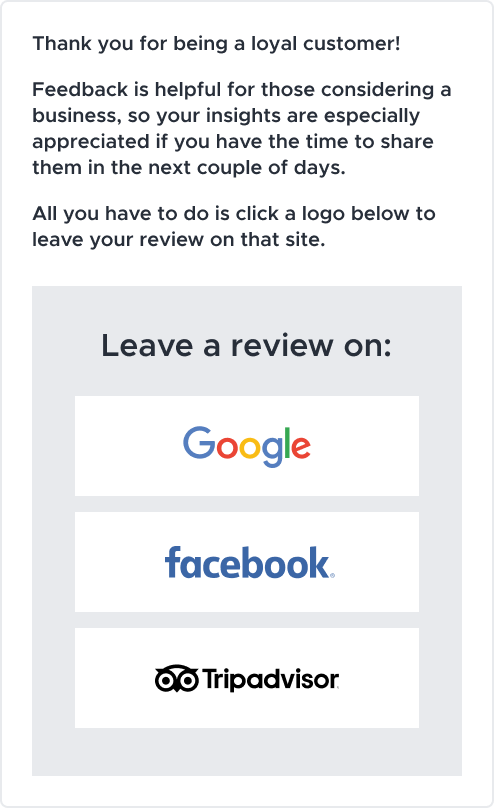Online reviews and digital spaces have shaken up what it means to conduct reputation management for restaurants.
The end-to-end guest experience — from research and reservations to ordering, delivery, consumption, and payment — can now happen in a handful of screen taps or mouse clicks. Satiated with choices — as well as information from reviews, social media, and user-generated content — consumers are demanding innovation in ways that drive industry trends, reputation management strategies, and even entire operations.
According to online reputation analysis by ReviewTrackers:
- The average rating of a restaurant is 3.8 stars out of 5.
- Restaurants take an average of 10 days to respond to reviews.
- A restaurant location averages around 16 new reviews per month.
These trends highlight the need for restaurants to invest in and commit to an effective reputation management strategy. By doing so, brands can navigate the increasingly complex market and strike the right balance for both their restaurant concepts and digital brand presence.
The findings from ReviewTrackers’ industry benchmarks report and online reputation analysis also underline the need for operators to keep customers’ needs at the forefront in order to build a community of loyal patrons. Where there is great brand reputation, where there is great guest experience, there is margin.
Reputation Management for Restaurants: Keys to Success
Standing out in a crowded marketplace while also performing above reputation benchmarks is not easy. A restaurant brand with reviews that talk about unfriendly service, long waits, or unappealing food will struggle to maintain its reputation and ongoing upkeep. By paying attention now, you can establish the foundation for successful reputation management for restaurants — and, as a result, strengthen brand credibility and foster consumer trust.
Nurture Your Brand’s Digital Channels
The guest experience does not begin when the diner arrives at the restaurant. In an on-demand economy where social and mobile innovations have significantly expanded the range of crucial touchpoints, winners and losers will be determined by their ability to diversify and personalize methods of engagement across the entire customer journey.
Having a brand website for your restaurant is no longer enough. You must also plant your brand flags by creating and claiming your location listings on other digital properties such as online directories, business review sites, and social media sites.
If you’re managing a restaurant brand with hundreds or even thousands of locations, consider investing in local listing management software. The payoff is real: Google rewards businesses for having consistent, up-to-date business information (such as NAP, or Name, Address, and Phone number) across all online listings. A local listing management software solution should also alert your team when there are inconsistencies in your listings, so that you can push real-time changes and ensure better data accuracy, more reviews, and higher online rankings at all times.
Respond to Guest Feedback
Successful reputation management for restaurants also involves staying responsive to customer needs. Restaurateurs who keep their fingers on the pulse of evolving diner demands and expectations are the ones most poised to succeed. Managing online reviews and customer feedback is critical and can spell the difference between experiences that delight and experiences that don’t.
Train your team so that those in charge of reputation management know how to respond to negative reviews. Acknowledging this type of feedback gives restaurants a second chance to fix the problem. It’s also in a restaurant’s best interest to offer disappointed customers an apology, a solution, and encouragement to return back to the location.
Remember: the way you respond to reviews can have a bigger impact on your restaurant’s reputation than what’s actually being said in reviews. By demonstrating the commitment to responding to guest feedback, you can perform well above industry average and achieve faster review response rates and higher overall ratings.
Develop a Review Generation Strategy
The happiest, most satisfied customers can be powerful word-of-mouth catalysts for a restaurant. In order to achieve optimal performance on online review websites and across the Web, restaurant marketers must be able to craft a review generation strategy around these customers, who may already be poised to give five stars and just need a little nudge.
To generate new reviews and improve ratings, top marketers create their own dedicated landing pages for reviews. It’s a great way to encourage customers to be more vocal about their experiences. These landing pages can be facilitated through the use of online reputation management software, guest survey forms, or a website review widget on the company website.
Track the Reputation of Individual Locations
All individual business locations within your restaurant group will affect your overall brand reputation. Conduct research into which ones are underperforming and need attention. Use analytical tools (such as customer experience analytics and natural language processing technology) to investigate negative reviews; this should provide valuable insight into what customers are saying on a location level and what trends are impacting the customer experience. Beyond monitoring, your team must proactively manage guest feedback and develop a plan of action for resolving issues that affect the brand as well as individual locations.




